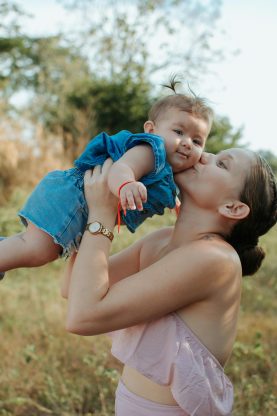Whether you are an experienced babysitter or new to the job, the safety and wellbeing of the children in your care should always be your top priority. While accidents are never predictable, as a responsible babysitter, you need to be prepared for any unforeseen circumstances. That’s why every babysitter should have essential first aid skills. Knowing how to respond in emergencies can make a critical difference and potentially save a child’s life. This article aims to highlight the key first aid skills every babysitter should have, equipping them with the knowledge and confidence to handle various situations that may arise while caring for children.
Table of Contents
Recognizing and Responding to Choking Emergencies
Choking is a common and potentially life-threatening occurrence, especially among young children who tend to explore things by putting them in their mouths. As a babysitter, you must be able to recognize the signs of choking and respond promptly to provide assistance. Be aware of symptoms such as difficulty breathing, coughing, wheezing, and inability to speak. It is essential to know the Heimlich maneuver, a technique used to dislodge obstructions from the airway. This technique involves standing behind the person, placing your arms around their waist, and delivering upward thrusts to the abdomen. Taking a first aid course that covers choking emergencies is highly recommended to learn this skill properly.
On-Demand Childcare in Your Neighborhood
Book a Sitter
CPR and Rescue Breathing Techniques
Cardiopulmonary resuscitation (CPR) is a vital skill that every babysitter should possess. CPR is a life-saving technique used to maintain circulation and oxygen flow to the body when someone’s heart has stopped, or they are not breathing adequately. The American Heart Association provides guidelines for administering CPR to infants, children, and adults, as each age group may require slightly different techniques. In addition to CPR, rescue breathing techniques are also crucial to know, especially for infants and young children who may experience breathing difficulties. Being confident in performing rescue breaths, coupled with appropriate chest compressions, can significantly increase the chances of survival during cardiac emergencies.
Dealing with Allergic Reactions and Anaphylaxis
Allergic reactions among children are increasingly common, with some being severe and potentially life-threatening. As a babysitter, it is essential to be aware of any known allergies and be prepared to respond to an allergic reaction or anaphylaxis. Anaphylaxis is a severe, rapid-onset allergic reaction that can result in difficulty breathing, swelling, hives, and even loss of consciousness. Familiarize yourself with the child’s specific allergies, including triggers and common symptoms, and know how to administer an epinephrine auto-injector (commonly known as an EpiPen) if necessary. Ensure you have permission from the child’s parents or guardians to administer any necessary medications.

Managing Cuts, Scrapes, and Burns
Children are naturally curious and often engage in activities that may result in cuts, scrapes, or burns. As a babysitter, it is crucial to have basic knowledge of wound care and burn management. Begin by cleaning the wound or burn with mild soap and water, applying gentle pressure to stop any bleeding. For minor cuts and scrapes, cover them with a sterile bandage or dressing. For burns, cool the affected area under running water for at least 10 minutes to reduce pain and prevent further tissue damage. Remember to never apply ice directly to burns as it can cause additional harm.
If a burn is severe or covers a large area of the body, seek medical attention immediately.
Handling Fevers and Recognizing Other Common Illnesses
A common ailment amongst children is a fever, which can be an indication of an underlying illness. As a babysitter, having the ability to monitor and manage a child’s fever is essential. Ensure you know how to accurately measure a child’s temperature using a thermometer and be familiar with the various methods available, such as oral, ear, and forehead thermometers. Additionally, learn to recognize signs of serious illness that may require immediate medical attention. These signs may include difficulty breathing, persistent vomiting, severe headache, or a rash that rapidly spreads.
Conclusion
Being a babysitter is a significant responsibility that requires more than just keeping children entertained and safe. It also involves being prepared for potential emergencies and having the necessary first aid skills. From recognizing and responding to choking emergencies to knowing CPR and rescue breathing techniques, handling allergic reactions and anaphylaxis, managing cuts, scrapes, and burns, and handling fevers and recognizing common illnesses, these essential skills will help you address a wide range of emergencies that may arise while babysitting. Completing a first aid course and refreshing your knowledge periodically can ensure you are well-equipped to handle any situation and provide the best care for the children in your charge. Remember, being prepared can make all the difference in an emergency, and your quick actions could help save a child’s life.










